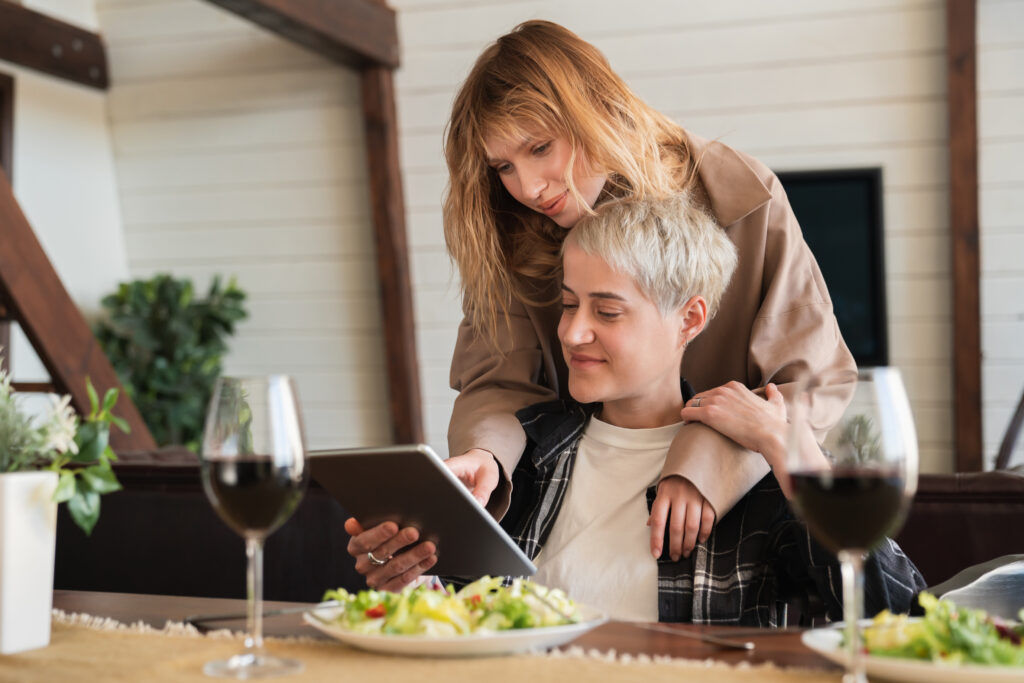Communication is the foundation of a healthy and successful relationship. It allows for understanding, connection, and the resolution of conflicts. However, clear and effective communication is not always easy to achieve. Misunderstandings, miscommunications, and lack of communication can all lead to frustration and strain in a relationship.
In this comprehensive guide, we will explore various strategies and techniques to help you improve communication in your relationship. From active listening to expressing yourself clearly and resolving conflicts constructively, we will cover it all. So, let’s dive in and discover how to communicate clearly and effectively in your relationship.
Table of Contents
- The Importance of Communication in Relationships
- Signs of Communication Issues in a Relationship
- Active Listening: The Key to Effective Communication
- What is Active Listening?
- Tips for Practicing Active Listening
- The Importance of Nonverbal Communication
- Expressing Yourself Clearly and Assertively
- Using “I” Statements
- Avoiding Blame and Criticism
- Expressing Emotions Effectively
- Resolving Conflicts Through Effective Communication
- Understanding the Conflict Resolution Process
- Active Problem Solving
- Compromise and Finding Common Ground
- Building Trust and Intimacy Through Communication
- Open and Honest Communication
- Sharing Vulnerabilities and Fears
- Emotional Support and Validation
- Overcoming Barriers to Communication
- Cultural and Gender Differences
- Assumptions and Stereotypes
- Emotional Blocks and Baggage
- Nurturing Communication in Long-Distance Relationships
- Utilizing Technology for Communication
- Setting Communication Expectations
- Making Quality Time for Each Other
- Seeking Professional Help: Relationship Counseling
- When to Consider Relationship Counseling
- Finding the Right Therapist
- The Benefits of Relationship Counseling
- Practicing Self-Care for Better Communication
- Managing Stress and Emotional Well-being
- Taking Time for Yourself
- Seeking Support from Friends and Family
1. The Importance of Communication in Relationships
Communication is the cornerstone of any healthy and successful relationship. It allows for the exchange of thoughts, feelings, needs, and desires between partners. Good communication promotes understanding, trust, and emotional intimacy. It helps couples navigate challenges, resolve conflicts, and maintain a strong and lasting bond.
When communication is lacking or ineffective, it can lead to misunderstandings, resentment, and feelings of disconnect. Partners may feel unheard, invalidated, or ignored. This can create a rift in the relationship and hinder the growth and development of the partnership.

2. Signs of Communication Issues in a Relationship
Recognizing the signs of communication issues is the first step in addressing them. Here are some common signs that indicate a need for improvement in communication:
- Constant misunderstandings or misinterpretations of each other’s words or actions.
- Difficulty expressing thoughts, feelings, or needs clearly and openly.
- Feeling unheard, dismissed, or invalidated by your partner.
- Avoiding or withdrawing from conversations or conflicts.
- Frequent arguments or conflicts without resolution.
- Lack of emotional intimacy and connection.
- Feeling distant or disconnected from your partner.
If you notice any of these signs in your relationship, it’s essential to address them and work on improving your communication skills.
3. Active Listening: The Key to Effective Communication
One of the fundamental aspects of effective communication is active listening. Active listening involves giving your full attention to your partner and seeking to understand their perspective. It requires focus, empathy, and a genuine desire to connect and comprehend.
What is Active Listening?
Active listening is a communication technique that involves fully engaging with your partner’s words, both verbally and nonverbally. It goes beyond hearing the words and involves understanding the meaning behind them. Active listening requires:
- Paying full attention to your partner without distractions.
- Avoiding interrupting or formulating responses while your partner is speaking.
- Using nonverbal cues, such as nodding or maintaining eye contact, to show you are listening.
- Paraphrasing or summarizing your partner’s words to ensure understanding.
- Asking clarifying questions to gain further insight into their thoughts and feelings.
Tips for Practicing Active Listening
To become a better active listener, consider implementing the following tips:
- Create a conducive environment: Choose a quiet and comfortable space where you can focus on your partner without distractions.
- Give your full attention: Put away electronic devices, make eye contact, and provide verbal and nonverbal cues to show you are engaged.
- Practice empathy: Try to put yourself in your partner’s shoes and understand their perspective without judgment.
- Avoid interruptions: Let your partner finish speaking before responding. Avoid interrupting or formulating your response in your mind while they are speaking.
- Reflect and paraphrase: Summarize or paraphrase your partner’s words to ensure you understand their message correctly. This demonstrates that you are actively listening and seeking to comprehend their viewpoint.
- Ask open-ended questions: Encourage your partner to expand on their thoughts and feelings by asking open-ended questions that invite further discussion.
- Validate their emotions: Acknowledge and validate your partner’s emotions, even if you don’t necessarily agree with their perspective. Let them know that you understand and empathize with how they feel.

The Importance of Nonverbal Communication
Nonverbal communication plays a significant role in active listening and overall effective communication. It includes facial expressions, body language, tone of voice, and other subtle cues that convey meaning beyond words.
When engaging in conversation with your partner, pay attention to their nonverbal cues. Notice their facial expressions, body posture, and gestures. These can provide insights into their emotions and help you understand the underlying meaning behind their words.
Additionally, be mindful of your own nonverbal communication. Maintain eye contact, use open body language, and adopt a warm and attentive tone of voice. These nonverbal cues will convey your interest and engagement in the conversation.
By practicing active listening and being attuned to nonverbal cues, you can enhance your communication skills and foster a deeper connection with your partner.
4. Expressing Yourself Clearly and Assertively
Effective communication is a two-way street. It involves not only listening actively but also expressing yourself clearly and assertively. When you express yourself clearly, you help your partner understand your thoughts, feelings, and needs. Assertiveness allows you to express yourself while respecting the boundaries and feelings of your partner.
Using “I” Statements
One effective way to express yourself clearly and assertively is by using “I” statements. “I” statements focus on your own thoughts and feelings, rather than placing blame or making assumptions about your partner’s intentions. They are non-confrontational and encourage open dialogue.
When using “I” statements, follow this simple formula:
- Start with “I feel” or “I think” to express your emotions or thoughts.
- Describe the specific situation or behavior that is affecting you.
- Explain the impact or consequences the situation has on you.
- Express your needs or desires for a resolution.
For example, instead of saying, “You never listen to me,” rephrase it using an “I” statement: “I feel unheard when I share my thoughts, and it makes me feel unimportant in our relationship. I would appreciate it if we could find a way to improve our communication and actively listen to each other.”
By using “I” statements, you take ownership of your feelings and communicate them in a non-blaming manner, fostering a more productive and understanding conversation.

Avoiding Blame and Criticism
Blame and criticism can be detrimental to effective communication. They can create defensiveness, resentment, and a breakdown in the connection between partners. Instead of blaming or criticizing your partner, focus on expressing your feelings and needs constructively.
When discussing an issue or conflict, choose your words carefully. Avoid using accusatory language or attacking your partner’s character. Instead, focus on the specific behavior or situation that is causing concern.
For example, instead of saying, “You always forget to do the dishes. You’re so lazy,” reframe it as, “I feel overwhelmed and unsupported when the dishes are left undone. It would mean a lot to me if we could share the responsibility and create a more balanced household.”
By expressing your feelings and needs without blame or criticism, you create a safe and respectful environment for open communication.
Expressing Emotions Effectively
Emotional expression is an essential aspect of effective communication. It allows you to share your feelings with your partner and promotes understanding and empathy. However, expressing emotions can be challenging for some individuals.
To express your emotions effectively, consider the following tips:
- Identify and label your emotions: Take time to recognize and name the emotions you are experiencing. This helps you gain clarity and express them more accurately.
- Use “I” statements to express emotions: Share your emotions using “I” statements, such as “I feel happy,” “I feel sad,” or “I feel frustrated.” This allows your partner to understand your emotional state without feeling attacked.
- Use specific and descriptive language: Instead of saying, “I feel bad,” provide more details about your emotions. For example, “I feel disappointed because I was looking forward to spending time together.”
- Avoid emotional flooding: If you find yourself overwhelmed by intense emotions, take a break and revisit the conversation when you are calmer. This prevents emotional flooding and allows for more productive communication.
Remember, expressing emotions is not about blaming or manipulating your partner. It is an opportunity to share your inner world and foster emotional intimacy.
5. Resolving Conflicts Through Effective Communication
Conflicts are a natural part of any relationship. However, how you handle and resolve conflicts can significantly impact the health of your relationship. Effective communication is crucial in navigating conflicts and finding mutually satisfactory resolutions.
Understanding the Conflict Resolution Process
Conflict resolution involves a step-by-step process that allows couples to address their differences and work towards a resolution. The process typically includes the following steps:
- Identify the issue: Clearly define the conflict and ensure both partners have a shared understanding of the problem.
- Listen to each other’s perspectives: Practice active listening and seek to understand each other’s viewpoints without interruption or judgment.
- Express your feelings and needs: Use clear and assertive communication to express your emotions, desires, and concerns.
- Find common ground: Look for areas of agreement and shared goals. Focus on finding a compromise or solution that satisfies both partners.
- Brainstorm solutions: Generate multiple potential solutions and evaluate their feasibility and effectiveness.
- Evaluate and choose a solution: Discuss the pros and cons of each solution and select the one that best meets the needs of both partners.
- Implement the solution: Take action and commit to the chosen solution. Communicate openly and honestly throughout the implementation process.
- Reflect and reassess: After implementing the solution, evaluate its effectiveness and make adjustments if necessary. Revisit the issue if conflicts persist.
By following these steps, couples can approach conflicts with patience, empathy, and a focus on finding resolution rather than winning the argument.

Active Problem Solving
Active problem-solving is an effective approach to conflict resolution. It involves actively engaging with your partner to identify and solve problems together. By working collaboratively, you can find solutions that meet both partners’ needs and strengthen your relationship.
To practice active problem-solving, consider the following tips:
- Define the problem: Clearly articulate the issue at hand, ensuring both partners have a shared understanding.
- Brainstorm possible solutions: Encourage open and creative thinking by generating multiple potential solutions.
- Evaluate each solution: Discuss the pros and cons of each solution, considering feasibility, effectiveness, and impact on both partners.
- Choose a solution together: Select the solution that aligns best with both partners’ needs and values. Aim for a win-win outcome.
- Take action: Implement the chosen solution and monitor its effectiveness. Adjust if necessary.
- Reflect and communicate: Regularly revisit the solution and communicate openly about its impact on both partners. Make adjustments as needed.
By actively engaging in problem-solving together, couples can foster a sense of teamwork and mutual support in their relationship.
Compromise and Finding Common Ground
Compromise is an essential aspect of healthy communication and conflict resolution. It involves finding a middle ground that meets the needs of both partners. Compromise is not about giving up your wants or needs entirely but rather finding a balance that satisfies both individuals.
When seeking a compromise, consider the following strategies:
- Prioritize needs and wants: Identify the most important needs and wants for both partners. Focus on finding common ground in those areas.
- Be flexible: Be willing to adjust your expectations and be open to alternative solutions that may differ from your initial preferences.
- Seek win-win outcomes: Look for solutions that benefit both partners rather than one person “winning” while the other “loses.”
- Communicate openly and honestly: Express your thoughts, feelings, and needs clearly and respectfully. Listen attentively to your partner’s perspective.
- Practice empathy: Try to understand and empathize with your partner’s point of view. This promotes understanding and facilitates compromise.
Remember, compromise is a collaborative effort that requires active participation from both partners. By finding common ground and seeking win-win outcomes, you can maintain a healthy and harmonious relationship.
6. Building Trust and Intimacy Through Communication
Trust and intimacy are vital components of a successful relationship. Effective communication plays a significant role in building and maintaining trust and intimacy between partners. When communication is open, honest, and respectful, it fosters a safe and secure environment for emotional connection and vulnerability.
Open and Honest Communication
Open and honest communication is the foundation of trust and intimacy. It involves sharing thoughts, feelings, and experiences with your partner without fear of judgment or rejection. When partners communicate openly and honestly, it creates an atmosphere of trust and authenticity.
To foster open and honest communication:
- Create a safe space: Establish an environment where both partners feel comfortable expressing themselves without fear of criticism or judgment.
- Be vulnerable: Share your thoughts, feelings, and experiences authentically. Allow yourself to be vulnerable with your partner, and encourage them to do the same.
- Practice active listening: Listen attentively to your partner’s thoughts and feelings without interrupting or dismissing them. Show empathy and understanding.
- Avoid defensiveness: When your partner expresses their thoughts or concerns, resist the urge to become defensive. Instead, strive to understand their perspective and validate their feelings.
- Be trustworthy: Honor your commitments, keep your promises, and maintain confidentiality. Trust is built over time through consistent actions and behaviors.
By cultivating open and honest communication, you can deepen your connection and establish a strong foundation of trust and intimacy.
Sharing Vulnerabilities and Fears
Sharing vulnerabilities and fears with your partner is an essential aspect of building trust and intimacy. It requires openness, empathy, and a willingness to support and validate each other’s emotions.
To share vulnerabilities and fears with your partner:
- Create a safe and non-judgmental space: Encourage your partner to share their vulnerabilities and fears by ensuring they feel safe and accepted.
- Express empathy and understanding: Listen attentively to your partner’s concerns and validate their emotions. Avoid minimizing or dismissing their fears.
- Be supportive: Offer reassurance and support to your partner. Let them know that you are there for them and that their feelings are valid.
- Share your vulnerabilities: By sharing your own vulnerabilities, you create a sense of mutual trust and encourage your partner to open up as well.
- Seek professional help if needed: If certain vulnerabilities or fears are too challenging to address on your own, consider seeking the assistance of a therapist or counselor.
Remember, sharing vulnerabilities and fears requires mutual respect and support. By fostering an environment of understanding and empathy, you can strengthen the emotional bond between you and your partner.
Emotional Support and Validation
Emotional support and validation are crucial components of effective communication in a relationship. They involve acknowledging and affirming your partner’s emotions, experiences, and perspectives.
To provide emotional support and validation:
- Practice active listening: Give your partner your full attention and listen attentively to their thoughts and feelings. Show empathy and understanding.
- Validate their emotions: Acknowledge and validate your partner’s emotions without judgment. Let them know that their feelings are valid and important.
- Offer reassurance: Provide words of encouragement and support. Let your partner know that you are there for them and that they can rely on you.
- Avoid minimizing or dismissing their experiences: Respect your partner’s experiences and perspectives. Avoid invalidating their emotions or belittling their concerns.
- Be patient and understanding: Recognize that everyone processes emotions differently. Be patient and understanding as your partner navigates their feelings.
By offering emotional support and validation, you create a nurturing and loving environment that promotes emotional well-being and connection.

7. Overcoming Barriers to Communication
Effective communication can be hindered by various barriers, such as cultural and gender differences, assumptions, and emotional blocks. It’s essential to recognize and address these barriers to foster healthy communication in your relationship.
Cultural and Gender Differences
Cultural and gender differences can significantly impact communication styles and expectations. Understanding and respecting these differences is crucial for effective communication.
To overcome cultural and gender barriers:
- Educate yourself: Learn about your partner’s cultural background and the communication norms and expectations associated with it. Be open to understanding and embracing cultural differences.
- Communicate openly: Have open conversations about your cultural backgrounds, values, and expectations. Share your perspectives and actively listen to your partner’s experiences.
- Be mindful of gender dynamics: Recognize that societal gender roles and expectations can influence communication patterns. Strive for equality and mutual respect in your relationship.
- Embrace diversity: Celebrate and value the diversity in your relationship. Appreciate the unique perspectives and experiences that cultural and gender differences bring.
By embracing cultural and gender diversity, you can foster a richer and more inclusive communication style in your relationship.
Assumptions and Stereotypes
Assumptions and stereotypes can create barriers to effective communication. They can lead to misunderstandings, bias, and a lack of understanding between partners.
To overcome assumptions and stereotypes:
- Challenge your assumptions: Be aware of your own assumptions and biases. Question them and consider alternative perspectives.
- Communicate openly and ask questions: Instead of making assumptions, ask clarifying questions to gain a better understanding of your partner’s thoughts and feelings.
- Avoid generalizations and stereotypes: Recognize that individuals are unique and should not be generalized based on their gender, cultural background, or other characteristics.
- Foster a judgment-free environment: Create a safe space where both partners feel comfortable expressing themselves without fear of judgment or prejudice.
By challenging assumptions and stereotypes, you can promote open-mindedness, understanding, and empathy in your communication.
Emotional Blocks and Baggage
Emotional blocks and baggage from past experiences can hinder effective communication. Unresolved emotions and past traumas can create barriers that prevent open and honest expression.
To overcome emotional blocks and baggage:
- Prioritize self-reflection: Take time to reflect on your own emotions and past experiences. Identify any unresolved issues or traumas that may be impacting your communication.
- Seek healing and support: If past experiences are causing emotional blocks, consider seeking the assistance of a therapist or counselor to work through them.
- Communicate openly with your partner: Share your emotional history and any challenges you may be facing. This allows your partner to understand your triggers and support you in your healing journey.
- Practice patience and understanding: Be patient with yourself and your partner as you navigate through emotional blocks. Offer support and reassurance.
By addressing emotional blocks and baggage, you can create a healthier and more open communication environment in your relationship.
8. Nurturing Communication in Long-Distance Relationships
Long-distance relationships present unique challenges when it comes to communication. However, with intentional effort and the use of technology, you can maintain a strong and connected relationship.
Utilizing Technology for Communication
Technology offers various tools and platforms that can bridge the distance in a long-distance relationship. Take advantage of video calls, voice messages, texting, and other communication apps to stay connected with your partner.
Consider setting regular communication routines and establishing guidelines for communication expectations. This ensures that both partners feel valued and connected despite the physical distance.
Setting Communication Expectations
In a long-distance relationship, it’s crucial to be clear about communication expectations. Discuss how often you both expect to communicate and the preferred mode of communication.
Be mindful of time zone differences and schedule regular video calls or phone dates. Setting clear expectations helps minimize misunderstandings and ensures that both partners feel connected and supported.
Making Quality Time for Each Other
Quality time is essential in any relationship, and long-distance relationships are no exception. Plan virtual date nights, watch movies or TV shows together, or engage in shared activities using technology.
Making time for each other demonstrates your commitment and helps maintain the emotional connection in your relationship. It also provides an opportunity to create shared experiences and memories.
9. Seeking Professional Help: Relationship Counseling
If you and your partner are struggling with communication issues that you are unable to resolve on your own, seeking the assistance of a relationship counselor or therapist can be beneficial.
When to Consider Relationship Counseling
Consider relationship counseling if:
- Communication issues persist despite your best efforts.
- Conflicts escalate and become increasingly challenging to resolve.
- Trust has been significantly damaged.
- Emotional or physical intimacy has diminished.
- You and your partner are considering separation or divorce.
Finding the Right Therapist
Finding the right therapist is essential for successful relationship counseling. Look for a licensed and experienced therapist who specializes in couples’ therapy or relationship counseling.
Consider scheduling initial consultations with different therapists to determine if their approach and style are a good fit for you and your partner. Trust your instincts and choose a therapist who creates a safe and supportive environment for both of you.
The Benefits of Relationship Counseling
Relationship counseling offers numerous benefits, including:
- Improved communication skills and techniques.
- Increased understanding and empathy between partners.
- Resolution of conflicts and the development of healthy problem-solving strategies.
- Strengthened emotional connection and intimacy.
- Tools and techniques to navigate future challenges.
Remember, seeking professional help is not a sign of weakness but rather a proactive step towards improving your relationship.
10. Practicing Self-Care for Better Communication
Practicing self-care is crucial for maintaining healthy communication in your relationship. When you prioritize your well-being, you are better equipped to communicate effectively and nurture your partnership.
Managing Stress and Emotional Well-being
Stress and emotional well-being can significantly impact your ability to communicate effectively. Take steps to manage stress and prioritize your emotional well-being.
- Engage in stress-reducing activities, such as exercise, meditation, or hobbies.
- Practice self-care rituals, such as taking relaxing baths or reading a book.
- Seek support from friends, family, or a therapist to help manage stress.
- Prioritize restful sleep and establish a consistent sleep routine.
By managing stress and prioritizing your emotional well-being, you can approach communication with a clear and calm mind.
Taking Time for Yourself
Taking time for yourself is essential for self-care and personal growth. Prioritize activities that bring you joy and fulfillment, whether it’s pursuing hobbies, engaging in self-reflection, or spending time with loved ones.
When you take care of yourself, you are better equipped to show up fully in your relationship and communicate effectively with your partner.
Seeking Support from Friends and Family
Building a support system outside of your relationship can provide additional emotional support and perspective. Reach out to trusted friends and family members for guidance, encouragement, and a listening ear.
Having a strong support system can help you navigate challenges and provide valuable insights and advice.
In conclusion, effective communication is an essential ingredient for a healthy and successful relationship. By practicing active listening, expressing yourself clearly and assertively, resolving conflicts constructively, and nurturing trust and intimacy through communication, you can strengthen your connection with your partner and build a thriving partnership. Remember, communication is a skill that can be developed and improved with conscious effort and practice.









